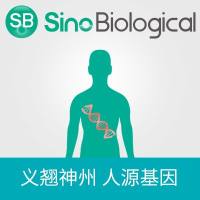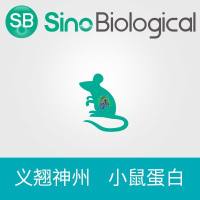Extracting Biological Meaning from Large Gene Lists with DAVID
互联网
- Abstract
- Table of Contents
- Figures
- Literature Cited
Abstract
High?throughput genomics screening studies, such as microarray, proteomics, etc., often result in large, ?interesting? gene lists, ranging in size from hundreds to thousands of genes. Given the challenges of functionally interpreting such large gene lists, it is necessary to incorporate bioinformatics tools in the analysis. DAVID is a Web?based application that provides a high?throughput and integrative gene functional annotation environment to systematically extract biological themes behind large gene lists. High?throughput gene functional analysis with DAVID will provide important insights that allow investigators to understand the biological themes within their given genomic study. This unit will describe step?by?step procedures to use DAVID tools, as well as a brief rationale and key parameters in the DAVID analysis. Curr. Protoc. Bioinform. 27:13.11.1?13.11.13. © 2009 by John Wiley & Sons, Inc.
Keywords: microarray analysis; gene functional annotation; bio?databases; enrichment analysis; gene clustering
Table of Contents
- Introduction
- Basic Protocol 1: DAVID Gene List Management Panel: Submit and Manage User's Gene Lists in DAVID
- Basic Protocol 2: DAVID Gene Name Batch Viewer: Explore Gene Names Based on User's Gene IDs
- Basic Protocol 3: DAVID Gene Functional Classification Tool: Classify Users' Genes into Co‐Functional Gene Groups
- Basic Protocol 4: DAVID Functional Annotation Tool: Identify Enriched Biology Within Users' Gene Lists
- Basic Protocol 5: DAVID ID Conversion Tool: Convert Users' Gene IDs to Different Types
- Guidelines for Understanding Results
- Commentary
- Literature Cited
- Figures
Materials
Figures
-

Figure 13.11.1 DAVID Gene List Management Panel. (A ) Following the steps listed in the left‐hand panel, user's gene list(s) can be submitted into the DAVID system. (B ) After a successful submission, user's lists are displayed in the Gene List Manager. Multiple gene lists can be submitted and manually switched back and forth through the list manager. View Image -

Figure 13.11.2 The DAVID Gene Name Batch Viewer. The user's input gene IDs and their corresponding gene names are displayed in a tabular format of one gene per row. Various hyperlinks are provided for an in‐depth exploration of each gene. View Image -

Figure 13.11.3 The results page of the DAVID Gene Functional Classification Tool. Users' input genes are classified into gene groups separated by blue rows. The gene members in each group share common biological characteristics. Various hyperlinks are provided for in‐depth information regarding each gene group. View Image -

Figure 13.11.4 Annotation Summary Page of DAVID Functional Annotation. The annotation categories in a tree structure can be expanded for selection/deselection according to research interests. Clicking one of the three buttons on the bottom will lead to the corresponding analytic module for an analysis on the annotation categories selected in this summary page. View Image -

Figure 13.11.5 DAVID Chart Report. The enriched annotation terms associated with a user's input gene list are displayed and ordered by the enrichment p values. Various hyperlinks are provided for more detailed information about the terms. View Image -

Figure 13.11.6 DAVID Functional Annotation Clustering Report. A clustered view of the DAVID Chart Report shows functionally related terms that form annotation groups. The groups are separated by blue rows. Various hyperlinks are provided for more detailed information about the term groupings. View Image -

Figure 13.11.7 DAVID Gene ID Conversion Tool. In the right‐hand result panel, the user's input gene IDs and converted IDs are displayed in a pairwise format. A summary table in the left‐hand panel lists the global statistics for the particular conversion job. View Image
Videos
Literature Cited
| Dennis, G. Jr., Sherman, B.T., Hosack, D.A., Yang, J., Gao, W., Lane, H.C., and Lempicki, R.A. 2003. DAVID: Database for Annotation, Visualization, and Integrated Discovery. Genome Biol. 4:P3. | |
| Huang, D.W., Sherman, B.T., Tan, Q., Collins, J.R., Alvord, W.G., Roayaei, J., Stephens, R., Baseler, M.W., Lane, H.C., and Lempicki, R.A. 2007a. The DAVID Gene Functional Classification Tool: A novel biological module‐centric algorithm to functionally analyze large gene lists. Genome Biol. 8:R183. | |
| Huang, D.W., Sherman, B.T., Tan, Q., Kir, J., Liu, D., Bryant, D., Guo, Y., Stephens, R., Baseler, M.W., Lane, H.C., and Lempicki, R.A. 2007b. DAVID Bioinformatics Resources: Expanded annotation database and novel algorithms to better extract biology from large gene lists. Nucleic Acids Res. 35:W169‐W175. | |
| Huang, D.W., Sherman, B.T., Stephens, R., Baseler, M.W., Lane, H.C., and Lempicki, R.A. 2008. DAVID gene ID conversion tool. Bioinformation 2:428‐430. | |
| Huang, D.W., Sherman, B.T. and Lempicki, R.A. 2009. Bioinformatics enrichment tools: Paths toward the comprehensive functional analysis of large gene lists. Nucleic Acids Res. 37:1‐13. | |
| Sherman, B.T., Huang, D.W., Tan, Q., Guo, Y., Bour, S., Liu, D., Stephens, R., Baseler, M.W., Lane, H.C., and Lempicki, R.A. 2007. DAVID Knowledgebase: A gene‐centered database integrating heterogeneous gene annotation resources to facilitate high‐throughput gene functional analysis. BMC Bioinformatics 8:426. | |
| Internet Resources | |
| http://david.abcc.ncifcrf.gov | |
| DAVID Bioinformatics Resources 2008. | |
| http://david.abcc.ncifcrf.gov/forum | |
| The DAVID Forum. |








